46 Airplane Facts You Should Know Before Booking Your Next Trip
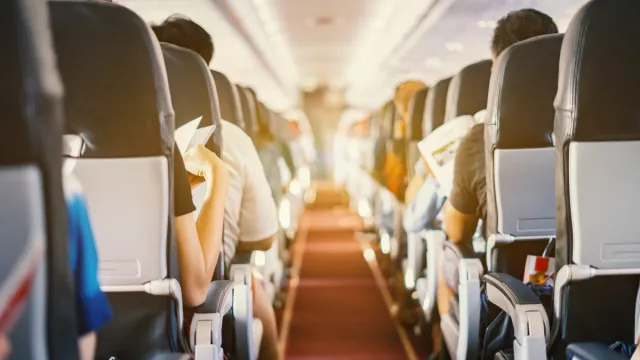
You may be a seasoned flyer with foolproof strategies for scoring overhead compartment space, getting upgrades, or taking a snooze when you hit cruising altitude, but even the most intrepid airplane travelers can be in the dark when it comes to what actually goes on in and around the cabin. Below, we’ve put together 46 fascinating airplane facts to answer all your questions about flying the friendly skies.
READ THIS NEXT: 38 Ocean Facts That Will Blow You Out of the Water.
Facts About Airplanes That’ll Make Your Mind Soar
Why don’t aircraft tires burst on impact? How dangerous is it when a plane loses an engine? Is that airplane water really safe to drink? Read on to find out!
1. Some planes can fly for more than five hours after one of their engines goes out.
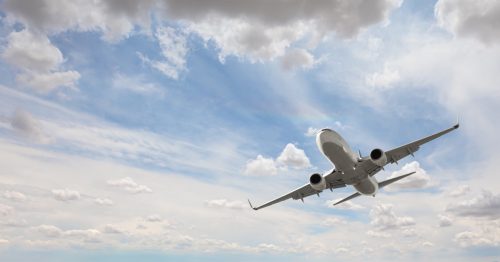
ETOPS—or extended twin operations—is a designation that indicates the length of time a twin-engine plane can safely cruise with one inoperative engine. In 2014, the Boeing 787 Dreamliner earned 330-minute ETOPS certifications, meaning it can stay safely operational on just one engine for more than five hours before needing to land.
2. If someone dies on your flight, their body might stay in the airplane cabin with you.
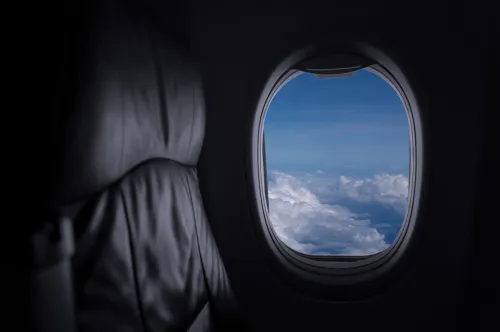
Though you might assume there’s a standard procedure to follow if a passenger passes away mid-flight, what actually happens to your dearly departed cabin-mate varies greatly by airline and type of plane. While certain planes, like Singapore Airlines’ Airbus A340-500 aircraft, were built with a special place to store bodies, according to one flight attendant, on many flights, the body will simply be moved to a back row and covered—except the head—until medical professionals on the ground can attend to the deceased.
3. In-flight oxygen masks aren’t intended to last the whole flight.
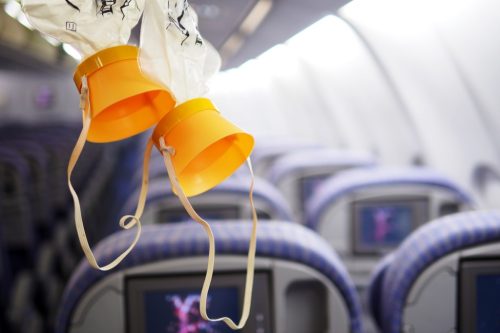
In fact, according to a report from the Air Accident Investigation & Aviation Safety Board, those masks only provide 12 minutes of continuous airflow on a 737. Luckily, that’s typically just the amount of time needed for your flight to find a safe landing spot.
4. Pilots frequently fall asleep on the job.

So, who’s flying your plane, exactly? Maybe no one—at least for portions of the flight. According to a 2013 report by the British Airline Pilots Association (BALPA), among a group of 500 pilots polled, 43 percent admitted to accidentally falling asleep while manning the plane, while 31 percent admitted to waking up from a nap to find their co-pilot sleeping, as well.
5. Black boxes aren’t actually black.
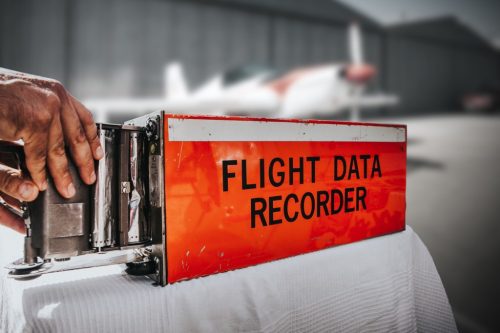
The black box, also known as the Flight Data Recorder, is actually painted bright orange. The heat-resistant paint used to coat the boxes’ exteriors comes in a highlighter-orange hue, which also happens to make them easier to find in case of an accident.
6. Airplane air is significantly drier than any you experience on Earth.
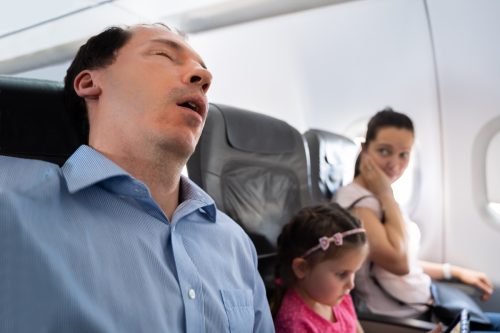
While the Mojave Desert in the Western United States often has humidity levels up to 50 percent, you’ll get just a fraction of that moisture aboard a plane. In fact, according to the World Health Organization, the humidity aboard your average aircraft hovers under 20 percent.
7. A Boeing 747 is more fuel-efficient than your car.
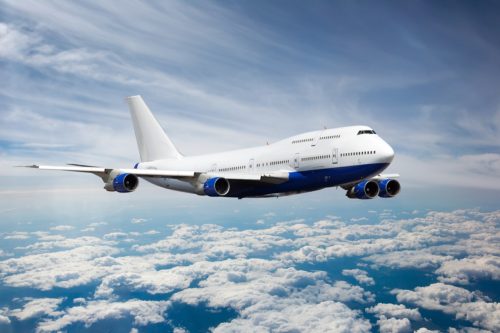
The Boeing 747 burns about one gallon of fuel every second, or five gallons per mile. Reversing this gives us the figure of 0.2 miles per gallon of fuel. This is much lower than the average car’s fuel efficiency at about 25 miles per gallon. But, considering the number of passengers the 747 carries, it is far more efficient. This breakdown explains that, because the plane can carry about 500 people, it’s actually getting 100 miles per gallon per person.
8. A hijacker once relinquished control of a flight for beer.
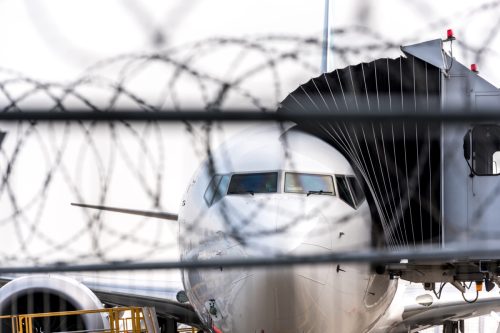
In 1985, an ex-con who hijacked a Norwegian Boeing 737 armed with a pistol decided to abandon his plan so long as the police were willing to give him one thing: beer. The plane landed safely at Fornebu Airport in Oslo, none of the 115 passengers on board were harmed, and the hijacker was arrested.
9. An engineer designed a plane with a detachable cabin to save passengers.

In 2016, a Ukrainian aero-engineer unveiled a system that would allow pilots to eject a plane’s cabin in the event of an engine failure. After ejection, the cabin would deploy parachutes to safely lower passengers to the ground. But as it turns out, most crashes don’t happen due to engine failure. Because issues tend to take place during takeoff and landing, this would leave very little time for the pilots to successfully eject the cabin and save passengers. A for effort, though!
10. The dirtiest place on the plane isn’t the bathroom.
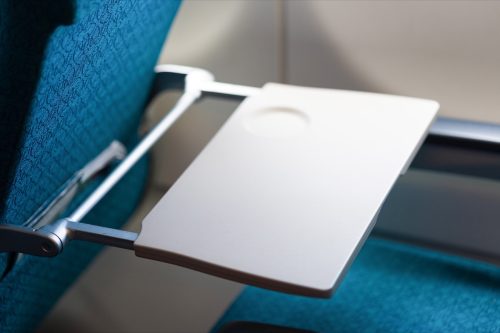
As it happens, the filthiest place on a plane is that tray table you’re eating your meal off of. According to a study conducted by TravelMath, tray tables hosted 2,155 colony-forming bacterial units (CFU) per square inch. In comparison, the button to flush the toilet had just 265 CFU in the same amount of space.
READ THIS NEXT: 55 Fascinating World Facts You Need to Know.
11. Dead chickens are thrown into plane jets during safety tests.
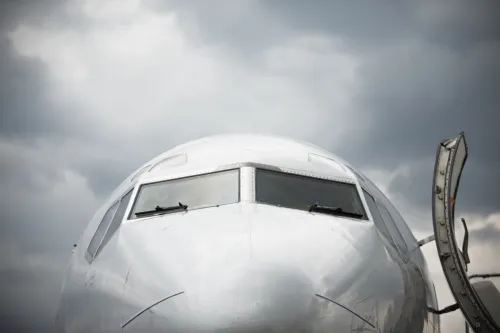
Yes, this incredibly real test is done with a “chicken gun,” and if you’ve seen the 2010 movie Captain Phillips, you know why. But before you report aviation experts to PETA, know that the chickens they receive are dead already. Airlines need to make sure that their windshields can protect pilots and passengers in the very likely event they collide with a bird. If you dare, you can watch the test in action (NSFW).
12. There are thousands of planes over the United States at any moment.
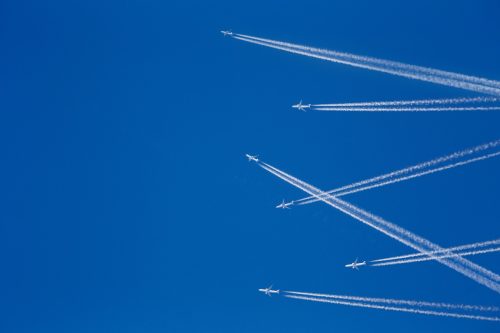
While you may only see the occasional plane pass by overhead, that doesn’t mean the sky isn’t full of them. In fact, according to the Federal Aviation Administration (FAA), there are over 5,000 planes in the air over the United States at any moment in time, and more than 8,000 flying across the globe.
13. Takeoff and landing are the most dangerous times during a flight.
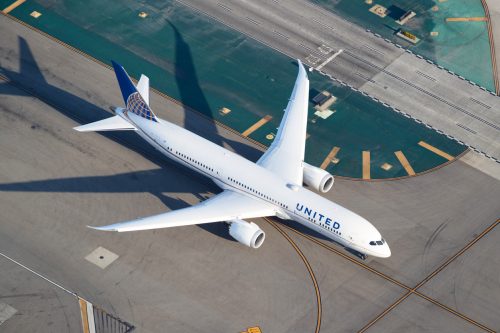
According to a report from Boeing, 13 percent of fatal accidents occur during a flight’s takeoff and initial climb, or the first three minutes of a flight. However, the descent and landing, or the final eight minutes of the flight, are far deadlier, accounting for 48 percent of all fatal accidents.
14. The world’s largest airplane weighed nearly 600 tons.
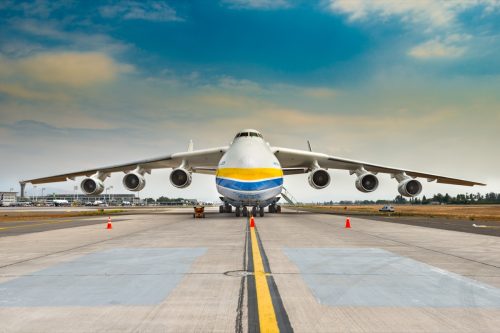
The Antonov An-225 had an impressive maximum takeoff weight of 598 tons. In comparison, the most weight the Boeing 747-8F can take off with maxes out at around 493 tons. Sadly, the aircraft was destroyed during the Russian invasion of Ukraine, according to Ukrainian officials.
15. The safest seats on a commercial aircraft are those at the back of the plane.
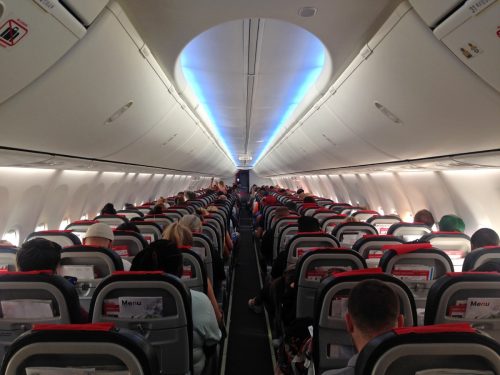
According to crash data compiled by Time, the fatality rate for seats in the rear third of a plane during a crash was 32 percent. The middle of the plane was found to be the least safe, with a 39 percent fatality rate, while the front was marginally safer with a 38 percent fatality rate.
16. You are about seven percent of the distance to space during flights.
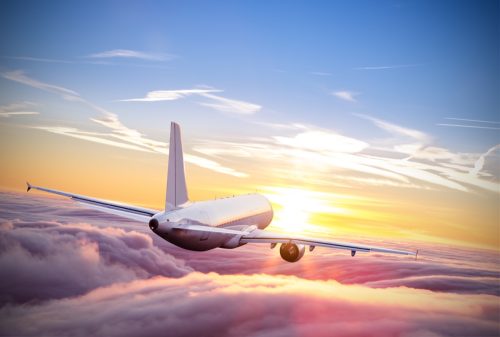
You might be surprised to discover that you’re actually only seven percent of the distance it would take for you to get into space when you’re on a plane. Planes can fly much higher than their average altitude of 30,000, but they don’t, because doing so would present health risks to those inside.
17. Airplanes can trigger lightning.
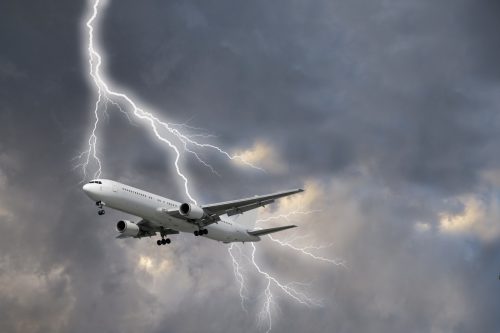
When a plane passes through clouds, the static created can actually spur the development of lightning. Fortunately, even if your plane is struck, you’re likely pretty safe. There hasn’t been a lightning-related plane crash in the United States since 1967, and increased safety measures have made lightning strikes less dangerous to passengers than ever before. When lightning strikes a plane, the electrical current is evenly distributed throughout the aircraft’s conductive aluminum interior, while grounding the plane’s interior electrical systems prevents surges that could interfere with its functionality.
18. Airplane blankets aren’t always washed between passengers.
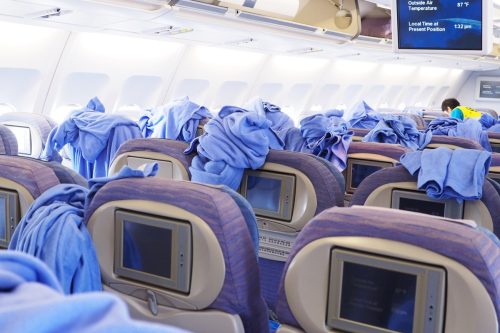
If you’re thinking of cozying up under one of those airline-provided blankets, think again. According to one report published in the Wall Street Journal, some airlines clean their blankets as infrequently as once every 30 days.
19. A Boeing 747 tank can hold 48,400 gallons of fuel.
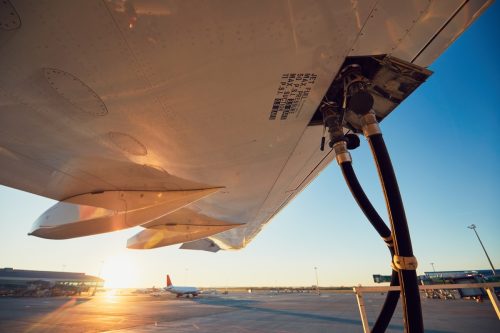
That’s 2,100 times the amount of fuel held in the gas tank of a Dodge Ram pickup truck. However, not all of that fuel is being used during a single flight—in fact, the plane only uses an average of five gallons of fuel per mile, meaning a 3,450-mile trip from New York to London only requires about a third of the plane’s total fuel capacity.
20. Dimming the aircraft’s lights serves a purpose beyond sleep.
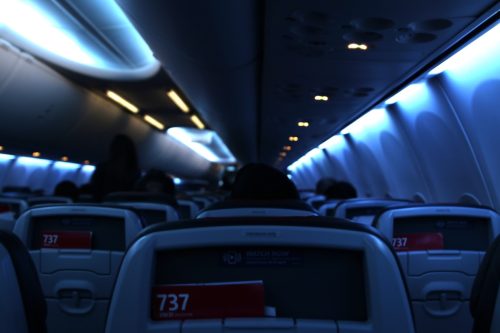
While it’s nice to imagine that airlines are hoping you’ll get in some restful sleep, that’s not the only reason why cabin lights are dimmed. The real reason why cabin crews dim the lights aboard a plane is to help passengers’ eyes adjust to the dark, an essential component in helping them survive should there be a sudden nighttime evacuation.
READ THIS NEXT: 63 National Park Facts About America’s Most Beautiful Destinations.
21. Plane exhaust kills more people than plane crashes.
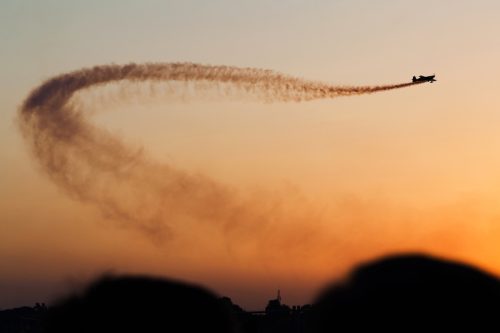
According to a study conducted at the Massachusetts Institute of Technology, airplane emissions are linked to 8,000 deaths each year. The number of people killed in plane crashes? Less than 1,000.
22. Plane doors can’t actually open in mid-flight.
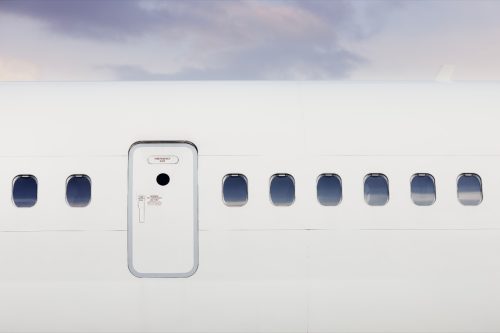
While numerous people have tried to open the exterior doors to airplanes mid-flight (only to find themselves later arrested for doing so), actually doing so would be next to impossible. The interior air pressure within the plane ranges from 4 to 14 PSI, meaning that, unless The Hulk or Thanos boarded your plane, it’s unlikely that the door could be opened.
23. All pilots who fly internationally must know at least a bit of English.
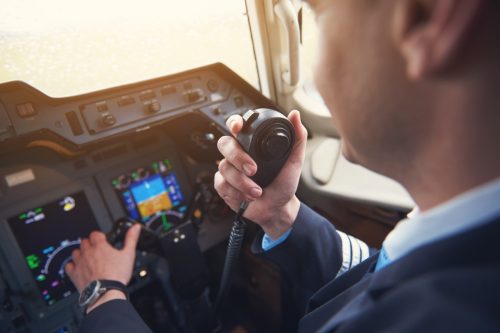
English may not be the official language of the United States, but it is the language of air travel. In 2003, the International Civil Aviation Association introduced new requirements to the Chicago Convention stipulating that all pilots flying internationally must be proficient in so-called “aviation English” to prevent potentially-fatal communication errors.
24. Pointing a laser pointer at a plane is a serious crime.

Drive your pets crazy with a laser pointer all you want, but never aim that annoying red dot at a plane. According to 18 U.S. Code Section 39A, if you point a laser pointer at a plane or its flight path, you can enjoy up to five years in prison to think about what you’ve done.
25. The world’s oldest airline is over 100 years old.
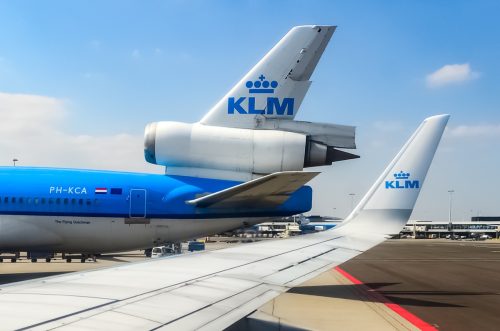
Dutch airline KLM has the longest continuous operating record of any airline in the world. The Amsterdam-based airline’s planes have been lifting off and touching down since 1919.
26. Airplane bathrooms can be opened from the outside.

While flipping that latch inside the bathroom that turns the door sign to “occupied” may give you some semblance of privacy, there’s an easy way for flight crew personnel to get in if they need to. Underneath that lavatory sign, there’s a switch that allows the flight crew to open the door if they’re concerned about your safety or the safety of other passengers.
27. One airline has had no fatal accidents.
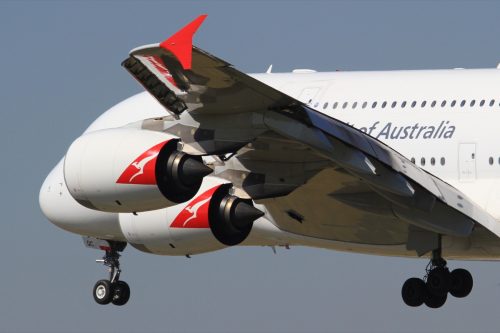
Despite being in business for nearly a century, Australian airline Qantas has never had a fatal accident involving one of its commercial aircraft.
28. There are 140 miles of wiring inside a Boeing 747.

According to a report from technology company Tyco Electronics, which manufactures wire connectors for the aviation industry, a 747 can pack 750,000 feet, or 140 miles, of wire inside it, weighing approximately 3,500 pounds in total.
29. American Airlines saved $40,000 by cutting one ingredient from meals.
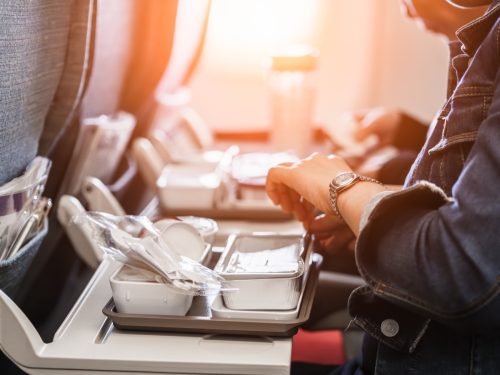
When attempting to cut costs in the 1980s, American Airlines discovered that removing just one item from passengers’ meals would do the trick. By simply nixing just one olive from the salads served in-flight, the airline saved a staggering $40,000 in the course of a single year.
30. Airplane water is riddled with bacteria.
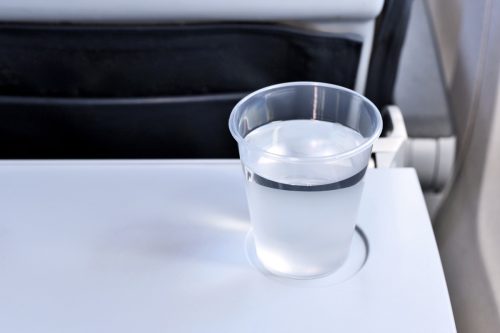
You might want to shell out the extra cash for a ridiculously overpriced bottle of water at the airport. A report from the Wall Street Journal reveals that bacteria including salmonella and staphylococcus were found in airplane water, in addition to insect eggs. Another study conducted at the University of Limerick found 37 distinct bacterial species in airplane water, with long-haul flights having worse water quality than their short-haul counterparts.
READ THIS NEXT: 37 Weird Facts About the Human Body That Will Blow Your Mind.
31. Some of the deadliest crashes happen when planes are securely on the ground.
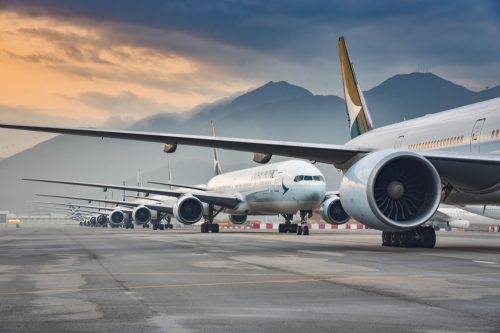
In 1977, the deadliest crash in the history of aviation happened on the ground. Pan Am Flight 1736 and KLM Flight 4805, both Boeing 747s, crashed into one another in Tenerife. However, as CBS News reports, it wasn’t an error on either pilot’s part, per se—low fog made visibility poor, and the airport’s runways were overly congested, leading to the two planes colliding, killing 583 passengers and flight crew members in the resulting fire.
32. Pilots and co-pilots eat different meals on a flight.
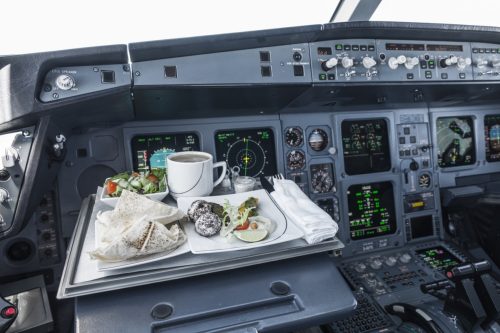
While it’s only a hard-and-fast rule on certain airlines, Business Insider reports that most pilots and co-pilots won’t eat the same thing for dinner. This way, if the food is contaminated and one pilot gets sick, the other should still be able to operate the aircraft.
33. The most expensive first class seat costs more than $30,000.

The Etihad Airways First Apartment—a private room with a bed, armchair, vanity and makeup mirror, and onboard shower—can easily run you more than $30,000 for a round-trip ticket from New York to Dubai.
34. Your taste buds change in flight.
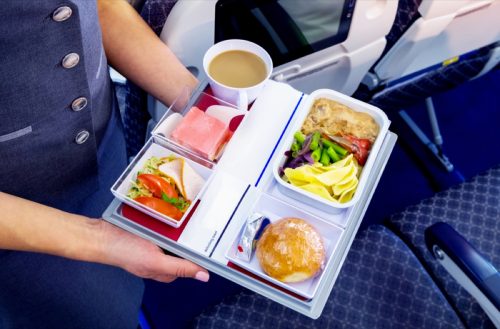
Good news for those who don’t find airplane meals particularly palatable: You’re not actually tasting as much of them as you would think. According to the BBC, the difference in air pressure and the low humidity in a plane’s cabin makes it more difficult for your taste buds to register sweet and salty flavors.
35. Traveling by plane is the safest way to get around.
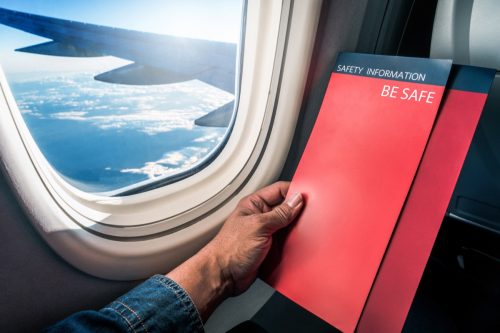
Traveling by airplane is extremely safe—and getting safer every year. In 2019, there were just 257 deaths related to aircraft accidents. By comparison, during the same year, 39,107 people died in car accidents in the United States alone.
36. The sound barrier was broken in 1947.
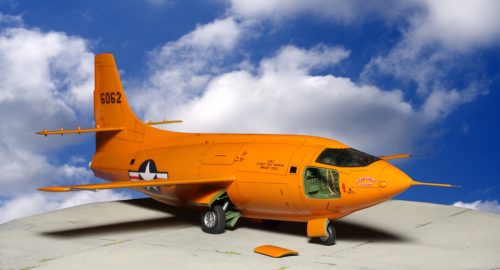
Pilot Chuck Yeager astonished the world with his record-breaking flying skills. This U.S. Air Force veteran learned to fly as a fighter pilot during World War II. Using the Bell X-1 rocket jet, he flew faster than the speed of sound—662 miles per hour at 40,000 feet. Later on in his life, he added yet another incredible accomplishment to his wildly-impressive CV: training U.S. Air Force veterans to become astronauts.
37. Sandra Bullock and about two million other Americans have aviophobia.

Despite crashes being very rare, 6.5 percent of Americans suffer from aviophobia, or a fear of flying. If you are scared to set foot on a plane, you’re in good company—even celebrities like Sandra Bullock are gripped by this common fear. The Gravity star once said she’s “deathly afraid of flying.” The Anxiety and Depression Association of America says that most of this stress originates from the total loss of control or possibly the feeling of being trapped.
38. Long-haul flights have secret bedrooms and a bathroom for flight attendants.
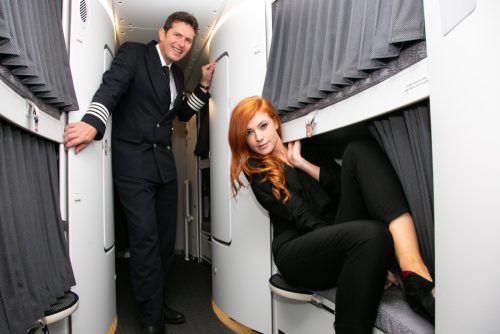
If flight attendants work on long-haul flights—which can last upwards of 12 hours—they need time to properly rest. So airlines have installed secret sleeping quarters above the main cabin with seven or eight beds, and occasionally a separate bathroom, as well. The crew can also enjoy in-flight entertainment while inside these secret chambers. That must be how they keep up their cheery demeanor on those long flights.
39. The world’s smallest plane weighs only 358.8 pounds.
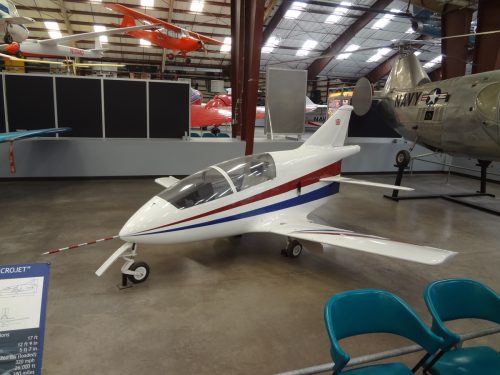
The Bede BD-5 microjet weighs nearly 360 pounds (unloaded) and has a wingspan of only 14.5 feet. Though minuscule, this jet can reach speeds of over 300 miles per hour, which is a little under half of the speed of sound.
40. The longest military plane is six stories tall.
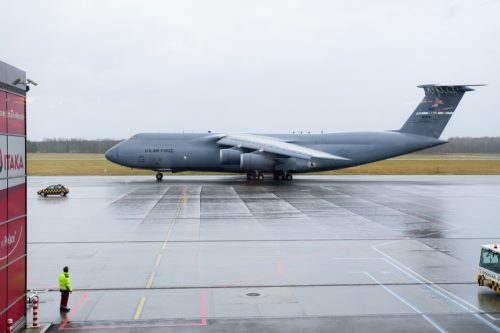
The U.S. military’s gargantuan C-5 has a wingspan of 222.8 feet, with each wing measuring the length of a basketball court. According to Popular Mechanics, “the aircraft stands 65 feet tall, the equivalent of a six-and-a-half story building.” It can also carry more than 250 million pounds and 350 passengers, even with equipment on board. It is so big that many Air Force bases have had to cut large holes in hangar doors to keep it indoors… well, most of it that is—the tail end still protrudes.
41. Turbulence is the top cause of non-fatal plane injuries.
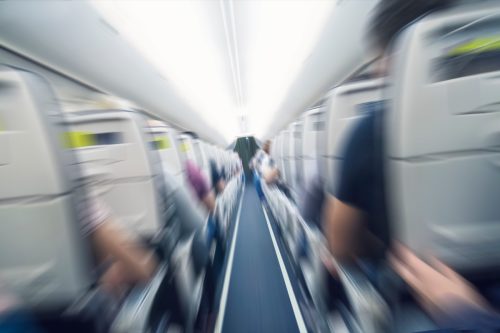
There’s a serious reason why you should always respect the seat belt sign. According to the FAA, U.S. air carriers experienced 163 turbulence accidents resulting in serious injuries between 2009 and 2023. Many of these incidents have been confirmed to involve passengers not wearing seat belts when the seat belt sign had been turned on. Buckling up might not be “the law” in the air, but it’s certainly worth it to preserve your safety.
42. Living in an airplane flight path could harm your heart.
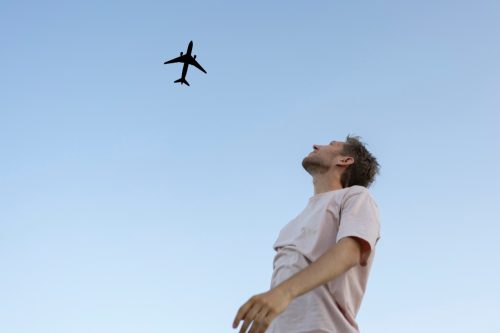
While regular air travelers might imagine they’d enjoy living close to the airport they frequent, actually living underneath a flight path could shorten your life. According to a 2010 study published in Epidemiology, individuals exposed to noise above 60 decibels on a regular basis—like the sound of an airplane overhead—had a 30 percent greater risk of dying from a heart attack than those typically exposed to noise levels under 45 decibels. Over a 15-year period living under a flight path, that risk was up 50 percent.
43. The fastest commercial plane flew at twice the speed of sound.
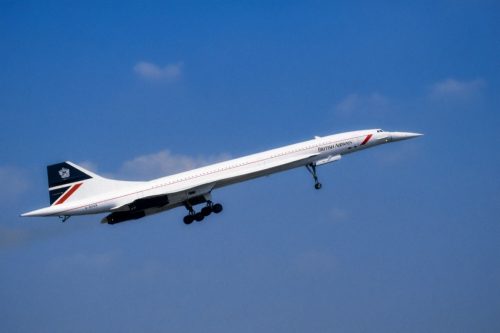
The Concorde, which offered flights continuously from 1976 to 2003, traveled at twice the speed of sound. In fact, the supersonic jet, which could achieve speeds up to 1,354 miles per hour, also broke a number of world records for its speed, in one case earning the record for the fastest transatlantic flight when it transported passengers from JFK in New York to Heathrow Airport in London in just 2 hours, 52 minutes, and 59 seconds.
44. Airplane tires are inflated to about six times the PSI of car tires.
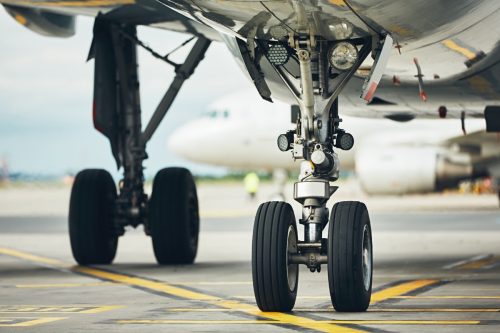
The real reason airplane tires rarely pop, even though they’re carrying a huge amount of weight? It’s not just their thickness that contributes to their strength under pressure. According to a Wired report, airplane tires are pumped to roughly 200 psi—about six times the psi of an average car tire. In fact, according to an experiment recorded by National Geographic, a Boeing 737’s tires can withstand over 900 psi before bursting.
45. There are temperatures too cold to fly in.
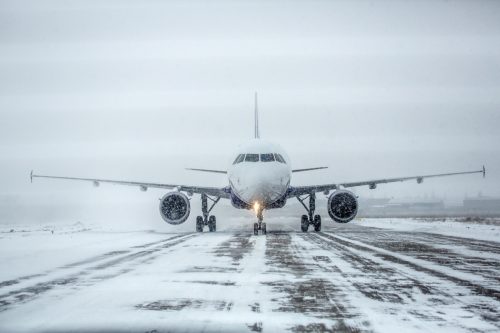
While the outside of an aircraft can reach -60 degrees Fahrenheit when it’s cruising at 35,000 feet, similar ground temperatures can stop a plane in its tracks. In 2014, when temperatures hit about -47 degrees Fahrenheit at Igarka Airport in Russia, a Tupolev-134 jet’s landing gear braking system actually froze, leading passengers to do their best to help. They actually got out to try to push the 61,640-pound plane.
46. A lot more people survive plane crashes than you think.
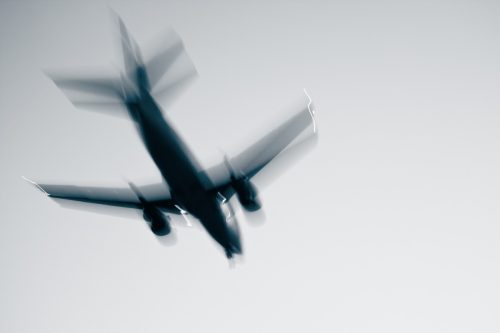
It’s true. According to the National Transportation Safety Board, approximately 95 percent of those involved in plane crashes survive them. Much of this has to do with things like improved impact protection, fire safety measures, and evacuation methods.
Wrapping Up
That’s it for our list of airplane facts, but be sure to check back with us soon for even more interesting trivia. You can also sign up for our newsletter so you don’t miss out on what’s next!
- Source: http://aaiu.ie/sites/default/files/Hellenic%20Republic%20Accident%20Helios%20Airways%20B737-31S%20HCY522%20Grammatiko%20Hellas%202005-085-14.pdf
- Source: https://www.who.int/news-room/questions-and-answers/item/air-travel-advice
- Source: https://www.faa.gov/air_traffic/by_the_numbers
- Source: https://www.boeing.com/resources/boeingdotcom/company/about_bca/pdf/statsum.pdf
- Source: https://icao.int/safety/lpr/Documents/323_en.pdf
- Source: https://law.cornell.edu/uscode/text/18/39A
- Source: https://www.scribd.com/document/165157922/Aircraft-Electrical-Wire
- Source: https://ncbi.nlm.nih.gov/pmc/articles/PMC4661625/
- Source: https://www.faa.gov/newsroom/turbulence
- Source: https://oce.ovid.com/article/00001648-201011000-00013/HTML
- Source: https://flightsafety.org/fsd/fsd_oct01.pdf